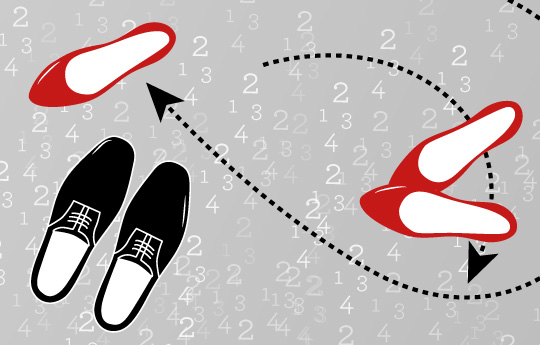biological and health sciences
Science dances tango
A group of researchers at the Council links tango dance with the predictive capacity of the brain
In spite of the efforts to control it, life is unpredictable. The human brain is the proactive organ in charge of predicting continually our future events. That “directionality”, has a great social implication as it enables quick adaptation to the environment, among other things.
To study this curious and mysterious capacity of the brain, Agustín Ibáñez, CONICET independent researcher at the Instituto de Neurología Cognitiva de Buenos Aires (INECO) [Institute of Cognitive Neurology of Buenos Aires], Lucía Amoruso (CONICET former fellow) and a group of researchers, managed to unravel some of the mechanisms that allow anticipating actions, and they did it with tango dancers. But, how can this dance be connected to neuroscience?
Ibañez answers this question by explaining the fact that tango dance has peculiar characteristics that demand, for instance, tuning and coordination regarding space-time in the proximity to another body. Besides, it includes rhythmical variations, speed fluctuations and incorporates improvisation, an action that forces dancers to be able to anticipate the kinematics of the other body.
This predictive capacity is present in dancers as well as in all people, it depends on an extensive brain network that includes frontal, temporary and the insular areas that are involved in the anticipation, experience and emotional relevance respectively. “This makes a person interpret, in the best possible way, the events of the world and build expectations on what is most likely to happen in a certain situation”, the researcher states. Besides, this brain capacity is comparable with the anticipations that people make when it is said that they use their “common sense”.
Tango in time to science
The researchers worked with the runners-up of the Tango World Championship, among others. “We shot 500 videos and spent a year validating them. Then, we selected photos of the five seconds in which there were perfect steps with gross or subtle errors. Finally, we asked them to watch them and tell us if there was a mistake while we recorded the activation of certain regions of the brain with high-density electroencephalogram”, Ibáñez comments.
So they registered the brain activity of eighty participants subdivided in: experts, beginners, and inexperienced. “We recorded eye activity, behavioural and brain responses by placing a mesh of sensors that measure the joint activity of thousands of neurons firing synchronously in the cortex”, Ibáñez says.
Nevertheless – as the researcher adds –, “this is as if we placed a microphone in a football stadium: it is possible to capture the coordinated cry of a team when they score a goal, but we cannot discriminate the individual talks of the grandstand who cried the goal from the ones that did not. Considering this drawback, the only possibility available is a “thick” measure of the mass activity of the neurons”, the scientist states.
Another element studied was one brainwave that reflects what the brain predicts or expects to happen and its contrast to what actually happens. The tests highlight the importance of the experience because if a person did not have the expertise, he or she was not familiar with the movements of tango dance, therefore his or her capacity to detect a mistake would be almost null. Ibañez comments that “contrary to that, a person who attends lessons intensively for years is going to have experiential knowledge in his or her motor system. This expertise will allow this person to observe the first movements of a step and recognize what the step is, make predictions about the end and detect performance errors, if there were any.”
The study revealed that an inexperienced brain processes the steps as they happen and the major errors are identified as “odd movements”. In the case of the expert, however, his or her brain activates regions that process the language and interprets long before the error is coming. The unavoidable conclusion is that the more one practices, the easier it will be to predict mistakes and correct them. “We noted that even before the mistake is made – specifiacally 400 milliseconds after it -, and several seconds before they had consciously came to the conclusion that whether there was a mistake or not, the brain activity of the experts dancers were already detecting something strange in the scene”, he explains.
So far, there has not been a scientific study that linked tango with its effect on brain plasticity and the role of experience in cognitive brain activity. “The studies with dance conducted so far showed only one dancer, but the team was interested in knowing what happened when a couple dancing was observed. Nevertheless, there has not been previous research showing how expertise produces changes in brain activity evoked by the observation of the dance”, he concludes.
- By Jimena Naser

